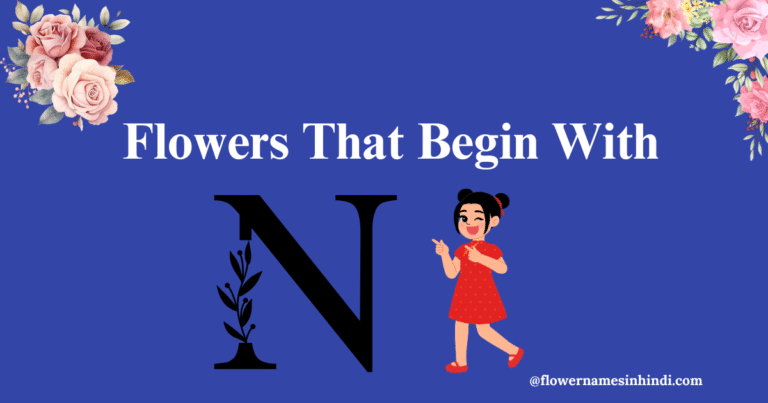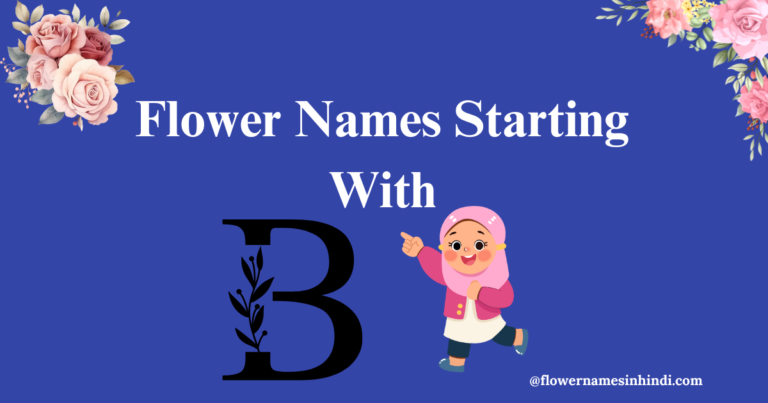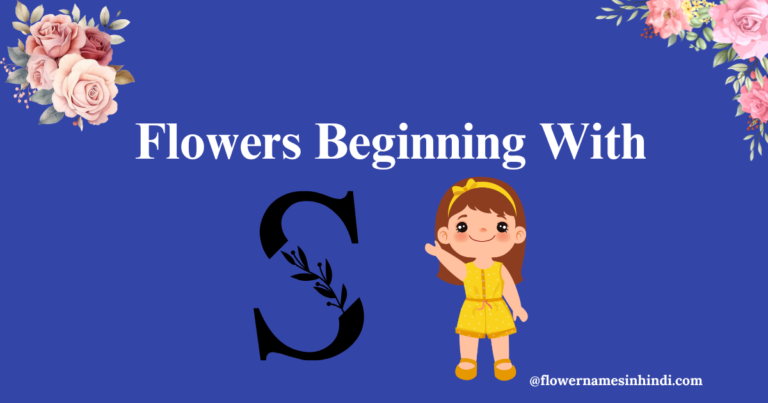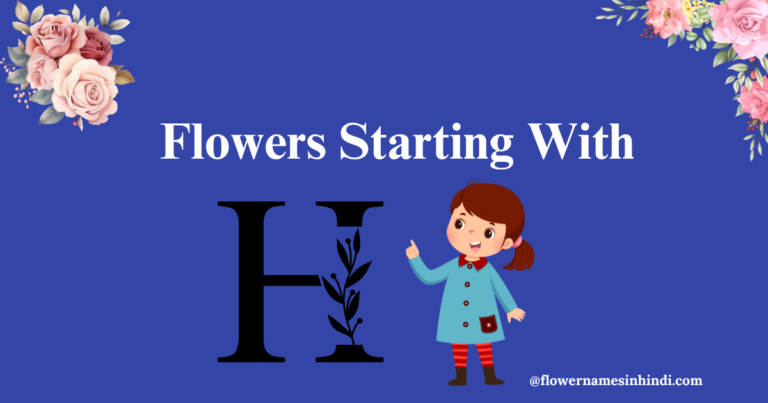🌼 Discover 14+ Beautiful Flowers That Start With W (With Pictures)
Nature is like a colorful painting, and flowers that begin with W add a special touch. These flowers are more than just pretty, they each have a unique story. They serve as expressions of art and resilience in the natural world.
In this article, we will explore flowers beginning with W. You will learn their botanical names, number of species, and blooming seasons. If you love flowers or enjoy learning about nature, this article will give you both fun and useful facts.
🌸 Wisteria
🌸 Wallflower
🌸 Windflower (Anemone)
🌸 Waxflower
🌸 Winter Jasmine
🌸 Wild Rose
🌸 Wild Indigo
🌸 Water Lily
🌸 Woolly Violet
🌸 Wild Geranium
Wild Columbine
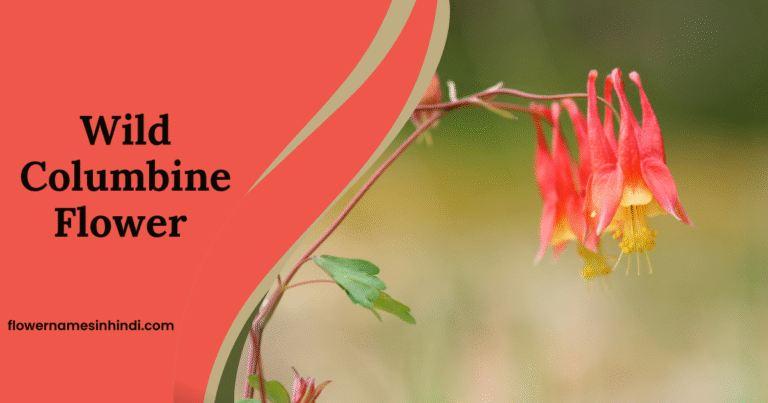
Wild columbine also known by other names like Canadian columbine and eastern red columbine. It is a perennial plant from the buttercup family Ranunculaceae. People grow this flower in gardens because it attracts many pollinators such as hummingbirds and bees. Its red and yellow bell-shaped flowers stand out in natural spaces and add bright colors in spring.
Wild columbine grows well in light shade and well-drained soil. It spreads easily and is simple to grow. The plant grows 15 to 90 cm (6 to 35 in) tall. Its fern-like leaves have lobes and grow in groups of three from the base and stems.
| Botanical name | Aquilegia canadensis |
| No. of species | About 130 species in the Aquilegia genus |
| Symbol | Strength, wisdom, and courage |
| Blooming time | Spring to early summer |
| Origin/ Native to | North America |
Woad: Flowers Beginning With W
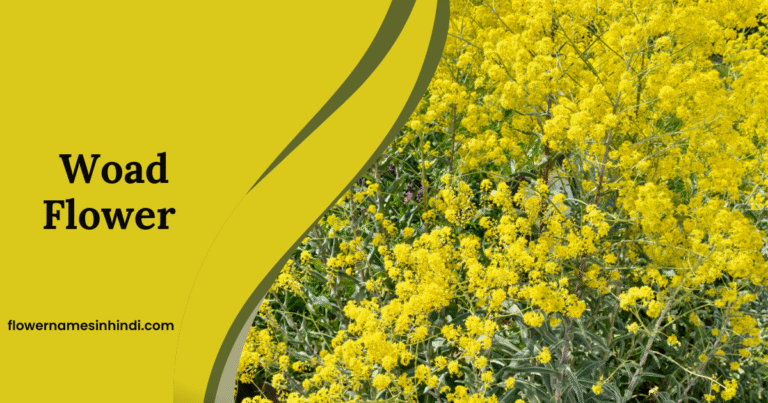
Woad is a flowering plant known for producing blue dye. It belongs to the Brassicaceae family, which also includes cabbage and mustard. The plant makes bright yellow flowers that bloom in clusters.
This plant grows best in full sunlight and well-drained soil. It can reach up to 4 feet tall. Woad resists drought and grows well even in poor soil, which makes it useful for xeriscaping and low-maintenance gardens. However, it spreads quickly and can become invasive, so gardeners need to control it carefully.
For thousands of years, people used its leaves to create a deep blue dye. Ancient groups like the Celts and Romans were famous for dyeing with woad.
| Botanical name | Isatis tinctoria |
| No. of species | About 30 species in the Isatis genus |
| Symbol | Strength, protection, and creativity |
| Blooming time | Late spring to early summer |
| Origin/ Native to | Europe and parts of Asia |
Wandflower
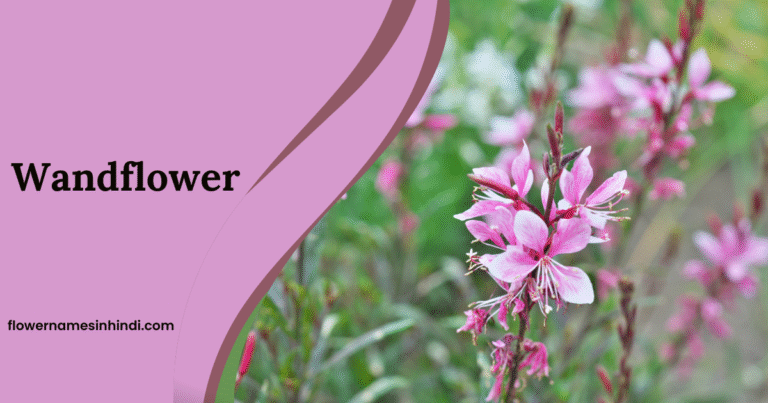
Gaura or windflower is a flowering plant genus from the Onagraceae family. Its name comes from the Greek word gauros, which means superb. This tall perennial is known for its delicate white to pink blooms that grow on thin, wand-like stems.
Gaura loves sunny spots and well-drained soil. It is drought-resistant and can survive in poor soil, which makes it perfect for xeriscaping and low-maintenance gardens. The tall stems sway gently in the breeze, adding graceful movement to any landscape.
| Botanical name | Gaura lindheimeri |
| No. of species | About 20 species in the genus Gaura |
| Symbol | Grace, elegance, and endurance |
| Blooming time | Late spring to early autumn |
| Origin Native to | Southern North America, primarily Texas and Louisiana |
Wild Rose: Flowers Beginning With W
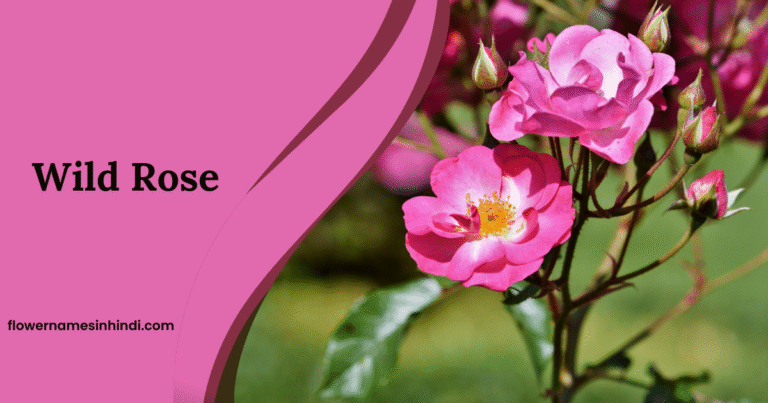
Rosa acicularis, also known as the wild rose, belongs to the Rosaceae family. People also call it the prickly wild rose, bristly rose, or Arctic rose. This deciduous shrub grows 1 to 3 meters tall and has pinnate leaves that are 7 to 14 cm long with three to seven oval leaflets. Its blossoms are usually pink, though sometimes white, and the bright red hips are pear-shaped to oval.
Wild roses thrive in well-drained soil with full or partial sunlight. These shrubs are perfect for naturalizing in wildflower gardens or planting in mixed hedgerows. Their charming flowers attract pollinators like bees, while their sharp thorns offer shelter and protection for wildlife.
It can withstand freezing temperatures as low as −50°C, making it one of the toughest rose species.
| Botanical name | Rosa acicularis |
| No. of species | About 100 species in this genus |
| Symbol | Love, beauty, resilience, and nature’s purity |
| Blooming time | Spring to early summer |
| Origin/ Native to | Northern Hemisphere (Europe, Asia, and North America) |
Wild Geranium
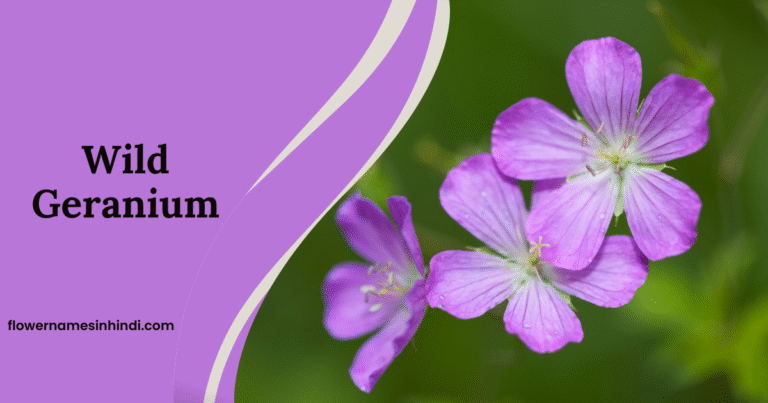
Wild geranium is a perennial flower from the Geraniaceae family. It stays beautiful all through its blooming season. Its clusters of soft pink to purple flowers attract both gardeners and wildlife.
The blossoms have five petals, each with fine veins that give them a delicate, textured look. After blooming, the plant forms seed pods shaped like a cranes bill, which is how it got its common name, Cranesbill.
This flower grows well in woodlands and moist, shady spots, making it perfect for natural gardens and shaded borders. It is easy to grow and will spread naturally when given the right conditions.
| Botanical name | Geranium maculatum |
| No. of species | Over 420 species in the Geranium genus |
| Symbol | Peace, calmness, and protection |
| Blooming time | Late spring to early summer |
| Origin/ Native to | North America (Eastern U.S. and parts of Canada) |
Windflower: Flowers Beginning With W
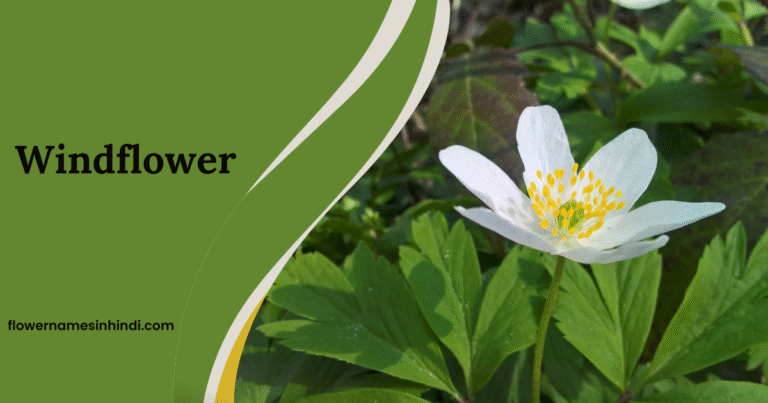
Windflower belongs to the Anemone genus in the buttercup family, Ranunculaceae. It is a low-growing perennial with daisy-like flowers in shades of blue, pink, and white. These blossoms appear early in spring, brightening gardens just as the dull winter colors fade.
Anemones have basal leaves with long stalks that may grow upright or lie close to the ground. Windflowers thrive in well-drained soil and enjoy full sun to partial shade. They are among the easiest perennials to grow and will spread on their own when conditions are right.
Ancient Egyptians and Greeks used windflowers in herbal remedies, believing they had protective and healing powers.
| Botanical name | Anemone blanda |
| No. of species | Approximately 120 species |
| Symbol | Anticipation, protection, and forsaken love |
| Blooming time | Spring or fall (depending on species) |
| Origin/ Native to | Temperate regions of North America, Europe, and Asia |
Wax Begonia
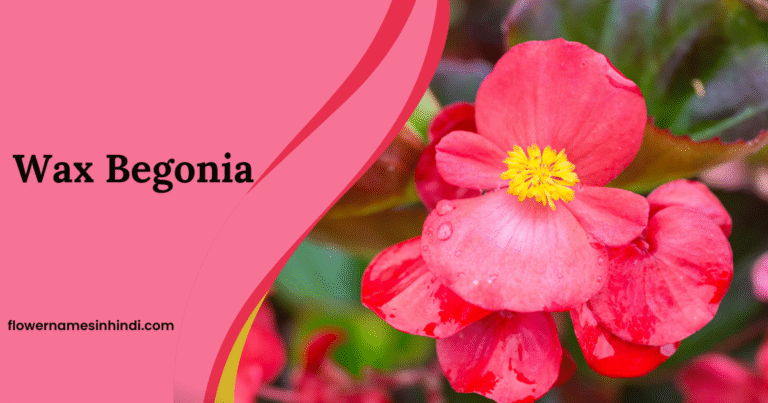
Wax Begonia is a well-loved plant that needs little care. It has shiny, wax-like leaves and bright flowers. This genus of perennial plants belongs to the Begoniaceae family. Gardeners often grow these flowers in beds or containers indoors, where they add white, pink, or red shades.
These plants adapt easily and grow in both sun and shade. People often use them for bedding, edging, or window boxes in large plantings. Wax Begonias also resist most pests and diseases, so gardeners of all skill levels can rely on them.
| Botanical name | Begonia semperflorens |
| No. of species | More than 2000 species in the Begonia genus |
| Symbol | Caution, dark thoughts |
| Blooming time | Spring to fall |
| Origin/ Native to | Tropical and subtropical regions of Central and South America |
Water Lily: Flowers Beginning With W
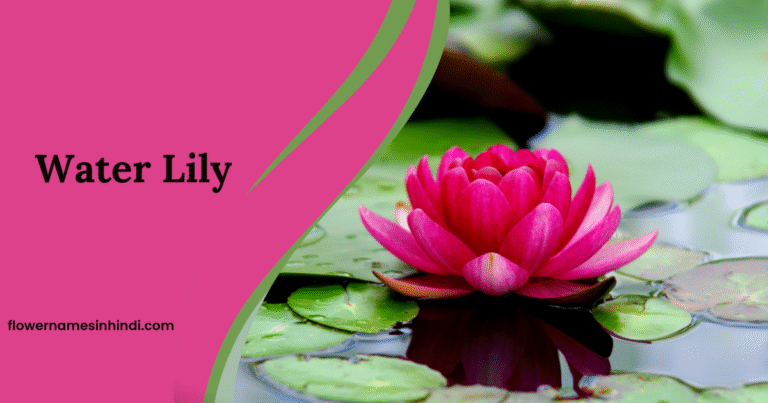
Water lilies are aquatic plants from the Nymphaeaceae family. They grow in temperate and tropical regions, with roots in soil under water and leaves that float or rise to the surface.
Their beautiful flowers in white, pink, yellow, and blue colors, add beauty and calmness to ponds. With round, waxy leaves, water lilies have long symbolized purity and beauty. They thrive in quiet, fresh water with full sunlight and slightly acidic to neutral conditions. Growing them in water pots controls their spread and ensures nutrition.
Water lilies are often called nature’s water purifiers because they reduce algae by shading the water.
Water lilies create a perfect home for frogs, dragonflies, and fish by giving them shelter and protection.
| Botanical name | Nymphaea |
| No. of species | 70 species |
| Symbol | Purity, enlightenment, rebirth |
| Blooming time | Spring to fall |
| Origin/ Native to | Tropical and temperate regions worldwide |
Wisteria
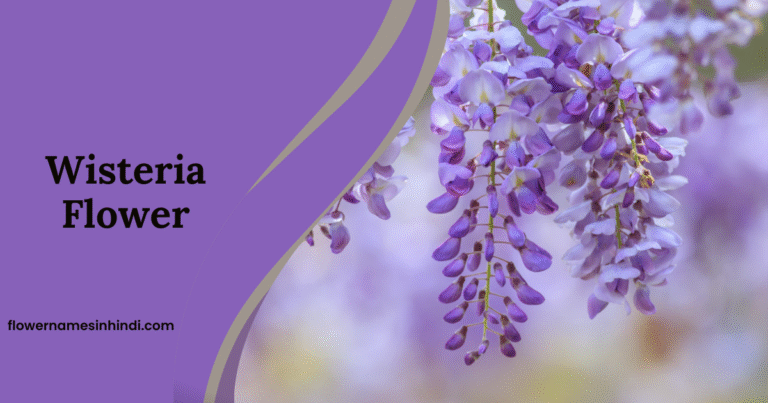
Wisteria is a climbing plant from the Fabaceae family that can grow up to 20 meters tall and 10 meters wide. It is known for its hanging clusters of fragrant flowers in lavender, blue, white, or pink.
This plant grows best in full sun or light shade with well-drained soil. Regular trimming controls its growth and improves flowering. Though it may take years to bloom, once established, it becomes a long-lasting highlight in the garden.
| Botanical name | Wisteria sinensis |
| No. of species | Approximately 10 species |
| Symbol | Love, beauty, fertility, longevity |
| Blooming time | Late spring to early summer |
| Origin/ Native to | China, Japan, and the eastern United States |
White Sage: Flowers Beginning With W
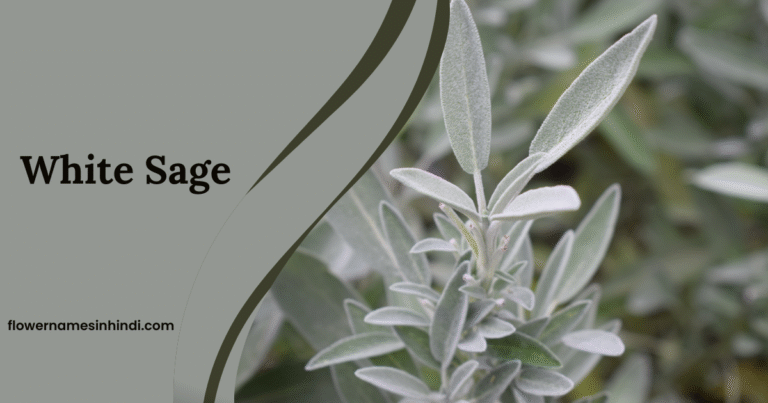
White sage is an evergreen shrub known for its silvery-grey leaves and strong fragrance. It grows about 1.5 meters tall and 1.3 meters wide and is sometimes called sacred sage, bee sage, or Californian white sage.
It thrives in full sun and well-drained soil, making it perfect for dry gardens. Once established, it tolerates drought but needs some water during long dry periods. Its earthy-scented leaves are often burned in smudging ceremonies and incense. Many people use the aroma for cleansing, healing, and spiritual practices.
When burned, white sage releases a thick, aromatic smoke believed to have antibacterial properties.
| Botanical name | Salvia apiana |
| No. of species | Approximately 700 species in the genus Salvia |
| Symbol | Purification, wisdom, protection, spiritual cleansing |
| Blooming time | Late spring to early summer |
| Origin/ Native to | Southwestern United States, northwestern Mexico |
Winterberry
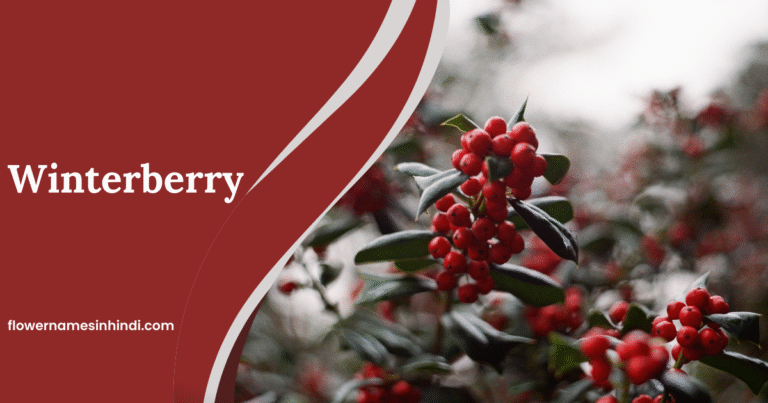
Winterberry is a deciduous holly known for its bright red berries that last through winter. Its green leaves turn yellow in autumn before dropping, adding color to gardens. This shrub grows 1–5 meters tall and is often used in holiday decorations and for attracting wildlife.
It thrives in damp, acidic soil with full sun or light shade. Since it is dioecious, you need both male and female plants for berries. Winterberry is low-maintenance and ideal for rain gardens.
Native Americans once used its berries medicinally, which gave it the name fever bush. However, its seeds, leaves, bark, and berries are toxic if eaten. Today, its berries remain popular for Christmas wreaths and floral displays.
| Botanical name | Ilex verticillata |
| No. of species | 570 species |
| Symbol | Abundance, festivity, wildlife attraction |
| Blooming time | Late spring to early summer; berries appear in late summer to fall |
| Origin/ Native to | Eastern North America, from Canada to the southeastern United States |
Woolly Violet: Flowers Beginning With W
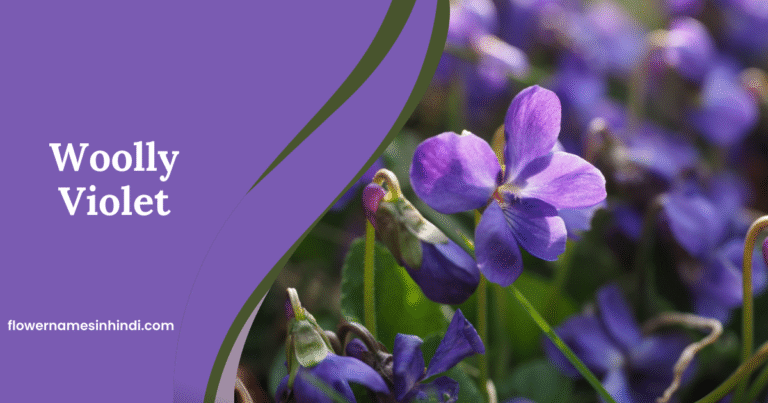
Woolly violet, also called blue violet or wood violet, is a perennial plant with fuzzy, heart-shaped leaves and purple or blue flowers that bloom in early spring.
It grows well in moist, well-drained soil and partial shade, spreading easily to form carpets of leaves and flowers.
Beyond its beauty, people have used woolly violet in traditional medicine for its calming effects and in herbal remedies.
| Botanical name | Viola sororia |
| No. of species | 500 species in the genus Viola |
| Symbol | Modesty, loyalty, and springtime renewal |
| Blooming time | Early spring; flowers typically appear from March to May |
| Origin/ Native to | North America, from Canada to the southeastern United States |
Winecup
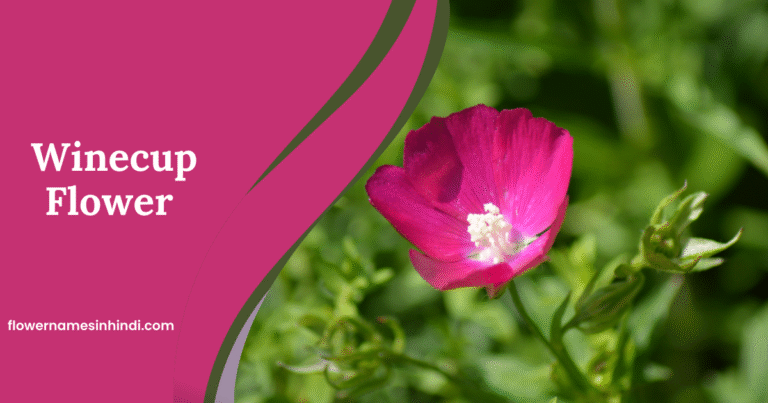
Winecups belong to the mallow family, Malvaceae. People often call them poppy mallows. They stand out with their deep wine-red to purple flowers shaped like cups or saucers.
Gardeners use winecups in rock gardens, borders, and as ground covers. Their vivid flowers add bursts of colour, and the plants resist deer, making them useful in wildlife-friendly spaces. Winecups grow best in full sun and well-drained soil. They also adapt well to rocky or sandy soil.
Some Native American tribes used winecup roots to create dyes and traditional remedies.
| Botanical name | Callirhoe involucrata |
| No. of species | Almost 9 species in the genus |
| Symbol | Beauty, resilience, and boldness |
| Blooming time | Late spring to summer |
| Origin/ Native to | Southwestern United States |
Weigela: Flowers Beginning With W
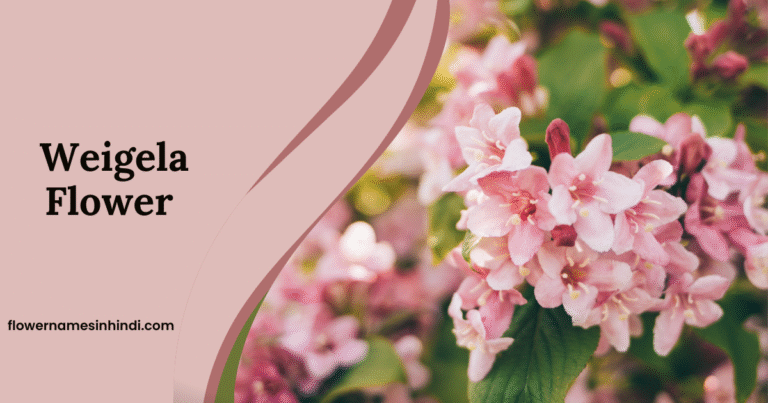
Weigela is a deciduous shrub from the Caprifoliaceae family that grows 1–5 meters tall. It is known for its trumpet-shaped flowers and dense green leaves. Its flowers attract hummingbirds and butterflies, making it a great choice for wildlife gardens. It also works well as a stand-alone feature plant.
Weigela grows best in well-drained soil with full sun or light shade. It needs little care, adapts to many soil types, and benefits from trimming after flowering to keep its shape and encourage more blooms.
| Botanical name | Weigela. |
| No. of species | Approximately 10-15 species with numerous cultivars |
| Symbol | Joy, beauty, and abundance |
| Blooming time | Late spring to early summer |
| Origin/ Native to | East Asia, including China, Korea, and Japan |
White Trillium
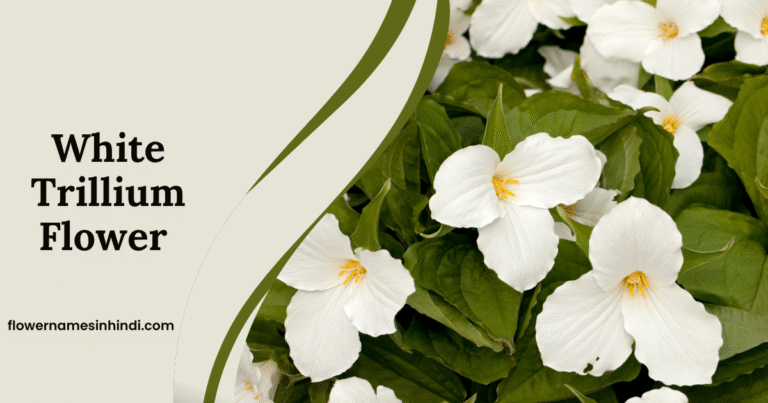
White Trillium, also called great white or white wake-robin, is a perennial plant from the Melanthiaceae family. It is known for its pure white, three-petaled flowers that bloom above a whorl of three leaves. The stems grow 20–40 centimeters tall.
This plant thrives in shaded woods with well-drained, slightly acidic to neutral soil. Gardeners often grow it in shady beds, forest gardens, or naturalized spaces. Once established, it needs little care except steady moisture and protection from strong sunlight.
The White Trillium is the official flower of Ontario, Canada, and even appears on its provincial flag and emblems.
| Botanical name | Trillium grandiflorum |
| No. of species | Approximately 15 species in the Trillium genus |
| Symbol | Purity, serenity, and renewal |
| Blooming time | Early to mid-spring |
| Origin/ Native to | North America (woodland regions) |
Conclusion of Flowers Beginning With W
Flowers that begin with the letter W bring unique beauty and charm to any garden. They brighten outdoor spaces while also supporting the health and diversity of the ecosystem. Adding these blooms to your garden creates a lively and welcoming atmosphere that celebrates nature.
Explore the world of W flowers and let them inspire your gardening journey.
Related Articles:


